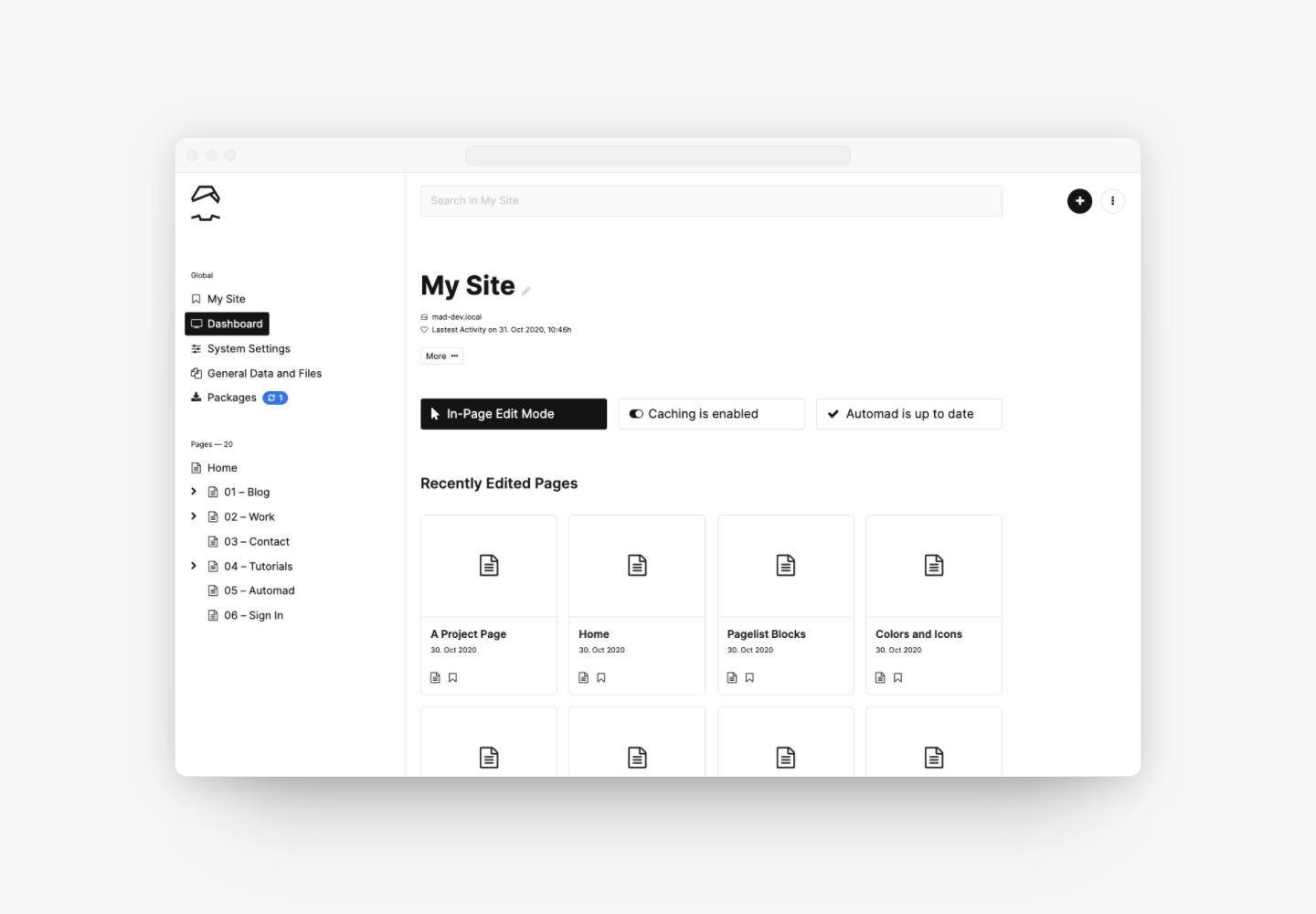A flat-file content management system and template engine
The fastest way to get Automad up and running is to use Composer.
composer create-project automad/automad .
Follow this guide to finish the installation and get started quickly.
Alternatively Automad can also be installed manually.
Take a look at the documentation to get started with using Automad or to learn how to develop themes and extensions. In case you are interested in using plain PHP in your themes or to develop more complex extensions, check out Automad's API reference.
Visit the Automad package browser to get free themes and extensions for your Automad site.
Join the community, ask questions or start a discussion on the Automad discussion platform.
In case you are interested in contributing, the following types of contribution are welcome:
- Publishing packages like themes or extensions to the Automad package browser
- Giving feedback and helping to grow a community
- Reporting bugs or requesting features at GitHub
However, I do not exclude at this point using parts of Automad's source in future projects under different licenses. In order to avoid having to ask anybody for permission when doing so, I will not accept any contributions to this repository. Please understand that pull requests will therefore be ignored.
To make the development of themes more efficient, plugins providing syntax highlighting and snippets for Automad's template language are available for the following editors:
© 2013-2020 Marc Anton Dahmen
Released under the MIT license





